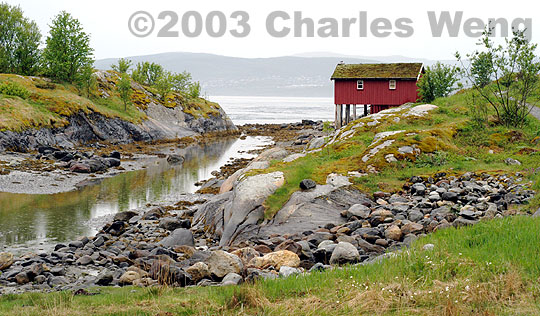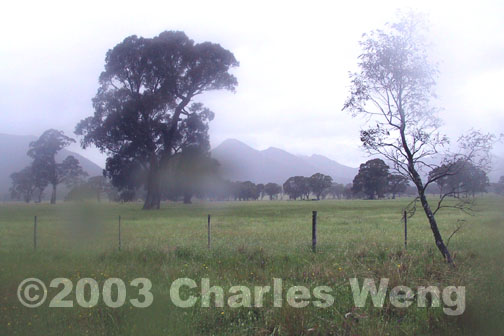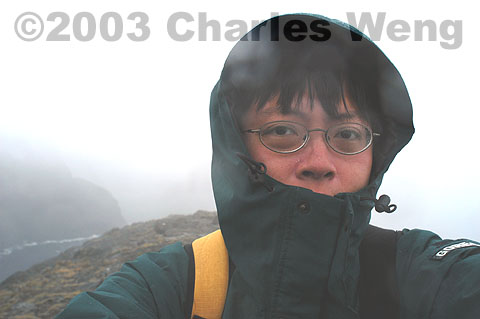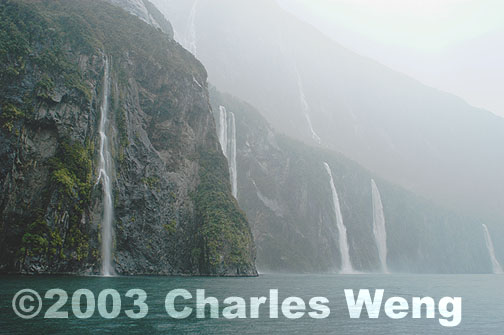Shooting in the rain
Devoted travelers in the South Pacific, the Pacific Northwest, the British Isles and Scandinavia must accept an absolute guarantee: getting wet. One fact of consolation is that the rain is most often a light drizzle, and not a downright deluge replete with thunder and lightning. Here, determined photographers will capture a moodier, more capricious complexion of Mother Nature.
As compelling as the result may sometimes appear, getting raindrops onto your multi-coated lens is hardly a good idea. When dried, dirty water will leave corrosive residue behind. For protection, always use a lens hood and an expendable sky filter. Have a clean, non-scratching piece of soft cloth ready to wipe up your expensive optics.
A common quick-fix amongst field photographers is to place the camera inside a clear plastic bag, or wrap it in shrink wrap (cling film). To avoid condensation build-up, make sure not to leave your equipment wrapped for too long.
Shoot from a shelter -- a car, an awning, under an umbrella -- whenever possible. Do not change lens, battery, film or memory card until you're back indoors.
Be sure to have waterproof clothing and footwear that are light, warm, breathable and quick-drying. Once you are comfortably at peace with the elements, your pictures will assuredly convey a sense of certainty, far from being haphazard snapshots taken in bad weather.
Waterfalls are best photographed right after rain. While established falls will have a full, robust volume, smaller falls may spawn out of nowhere, lasting for no more than a day. When sunlight finally pierces the thick clouds, you may even get a fine rainbow in the mist.
Photographs from top down:
| Saltstraumen, Norway | |
| Victoria Valley, Grampian National Park, Australia | |
| Hyde Park, London, England | |
| Knivskjellodden, Nordkapp, Norway | |
| Milford Sound, New Zealand |
| Back to top |




